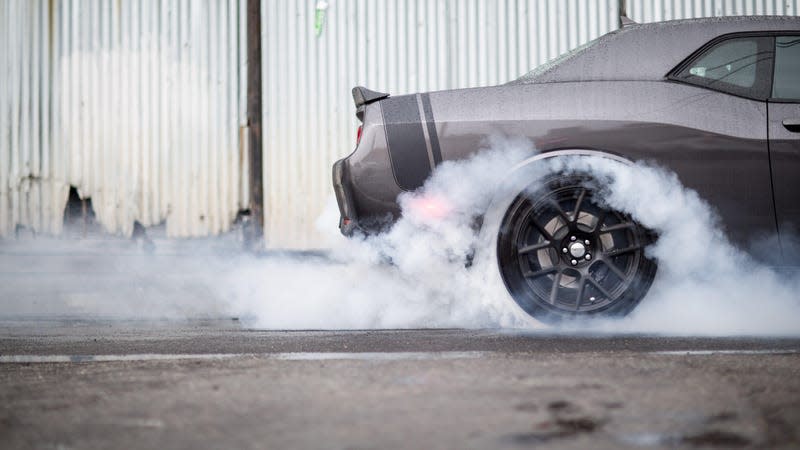Tire Dust Is the ‘DDT Of Our Generation’

Research scientists are sounding the alarm in the Pacific Northwest after this month’s “atmospheric river” drenched much of the state’s roads, sending brake and tire dust into rivers, streams and, eventually, the Pacific Ocean.
We all know the exhaust from our cars is bad for our health and the environment, but dust from tire and brake wear is just as damaging. California experienced heavy storms in the early half of January, which sent heavily polluted runoff from the roads to the waterways. It turns out there’s a particular chemical found in tires that seem to suffocate the highly endangered coho salmon. From Forbes (paywall):
Read more
A growing body of research indicates that in addition to being a major source of microplastic pollution, the chemical 6PPD, an additive that’s used to keep tires from wearing out, reacts with ozone in the atmosphere to form a toxic new substance scientists call 6PPD-Quinone. It’s killing coho salmon and likely harms other types of fish, which exhibit symptoms resembling suffocation.
The devastation of the coho, which the U.S. designates as an endangered species, has reached crisis level. In California’s Central Coast, estimates suggest the fish is already close to extinction, with its population plunging from as high as 500,000 fish in the 1940s to a few thousand currently. While generally more abundant in Washington state, the population of wild coho salmon was estimated to have plunged to around 200,000, a third of the level of 2021, according to Puget Sound Institute. And while tire manufacturers say they’re following the issue closely, they don’t know when or if they’ll have a safe alternative to 6PPD. They’ve been using it for decades.
“This is the DDT of our generation,” David Troutt, head of natural resources for the Nisqually Tribe in Washington, told Forbes. “This thing is killing salmon every time it rains in the Puget Sound region. We can’t take it anymore.”
But it isn’t just this one fish pollution we should worry about. Tire dust accounts for 6 million tons of micro-pollutants each year, current estimates suggest. With such a mass of material it’s not just salmon which are threatened by chemicals in tire dust. And it’s almost certainly not just 6PPD-Quinone we have to worry about. California’s Department of Toxic Substance Control is also investigating six other harmful chemicals found in tires. 6PPD-Quinone is considered the “low hanging fruit” of researchers investigating tire dust’s impact on the environment, Forbes reports. Tires contain all sorts of heavy metals, chemicals and synthetic compounds, the effects of which on humans and their environment are not completely understood.
Though found in its highest concentrations in runoff water, according to a study published in Environment International, tire dust can be fine enough to be inhaled as well. The Union For Concerned Scientists found cars, trucks and buses are a significant source for some of the pollution most harmful to human health — particulate matter smaller than 2.5 micrometers in diameter, or PM 2.5:
While PM2.5 is not the only air pollutant that adversely affects health, it is estimated to be responsible for approximately 95 percent of the global public health impacts from air pollution. Long-term exposure to PM2.5 causes increased death rates attributed to cardiovascular diseases, including heart attacks, and has been linked to other adverse impacts such as lung cancer. Chronic exposure to PM2.5 in children has also been linked to slowed lung-function growth, development of asthma, and other negative health impacts.
The coming age of EVs will only make things worse as the heavier cars are harder on consumer tires and brakes. While there are some companies experimenting with do-dads that scoop up tire particulate or create tires with less shedding, those solutions are worthless without some serious legislation and regulation. Tire manufactures have known about the 6PPD-Quinone problems for years and are still sitting on their hands when it comes to finding a solution.
More from Jalopnik
Sign up for Jalopnik's Newsletter. For the latest news, Facebook, Twitter and Instagram.

